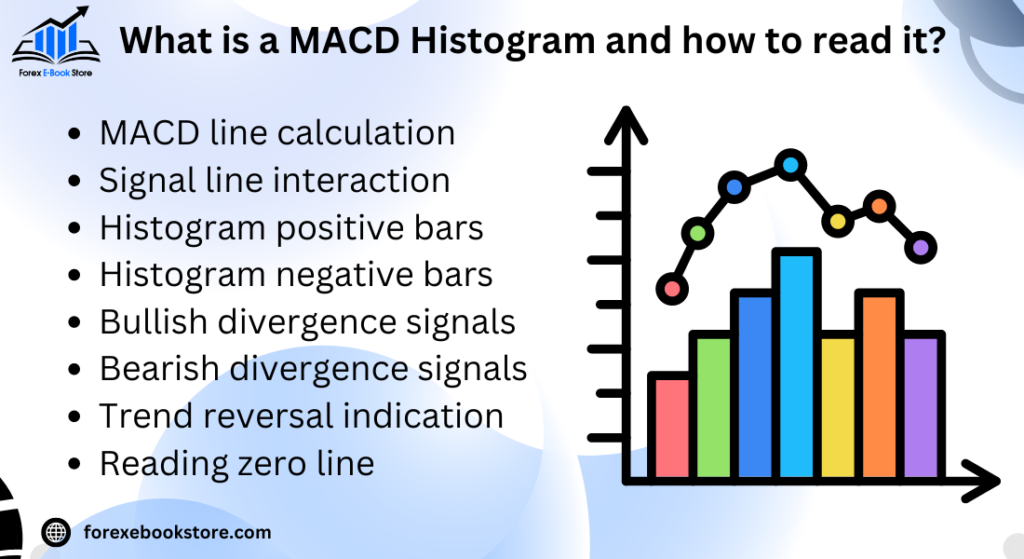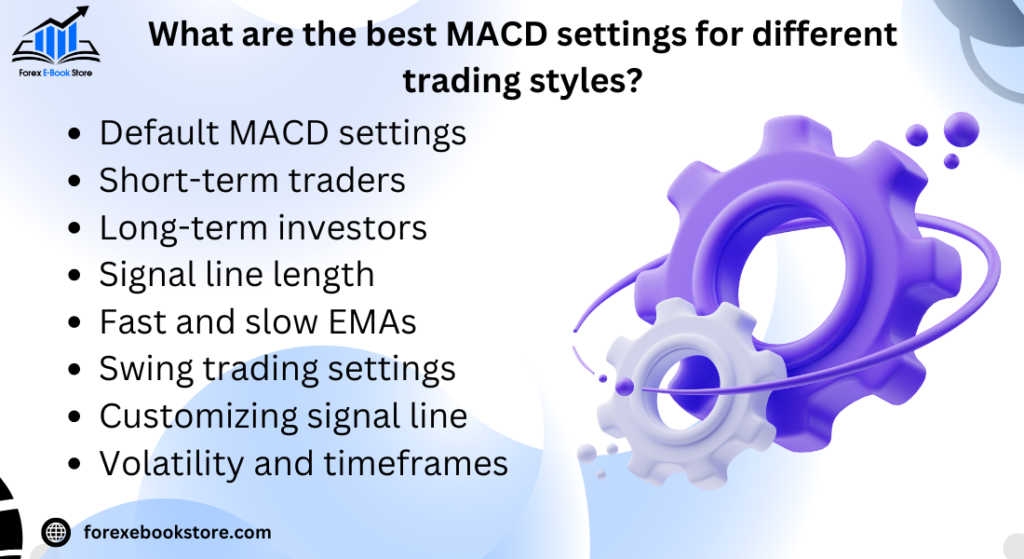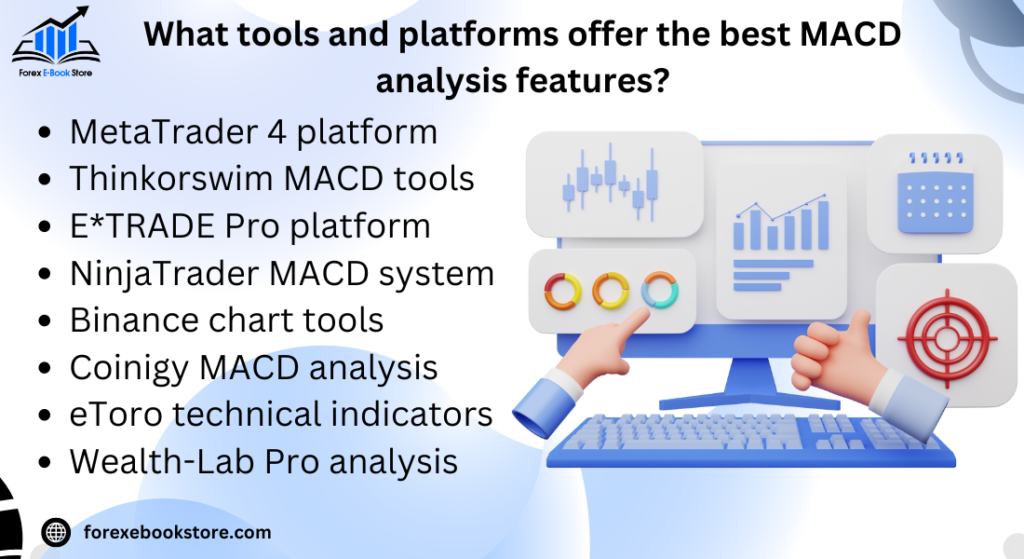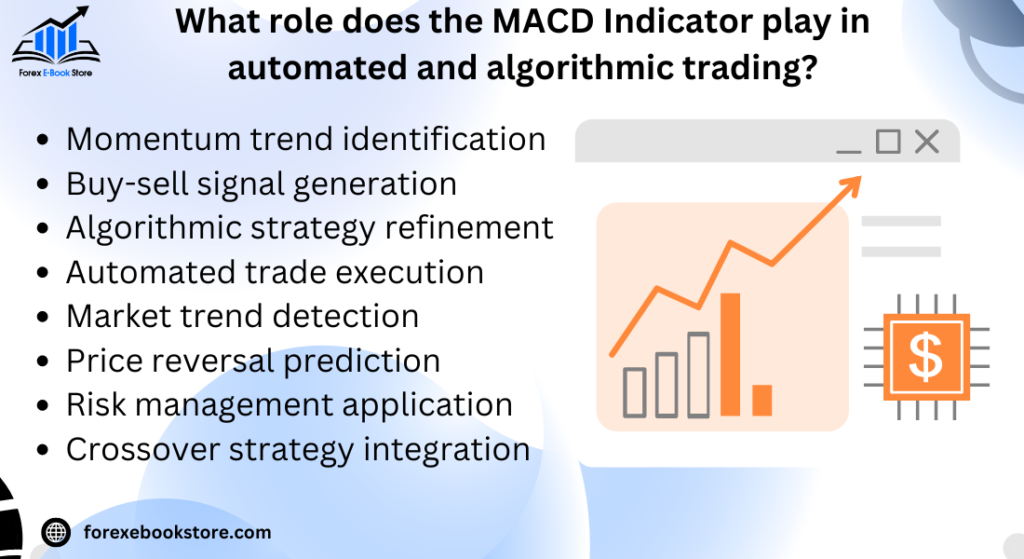Understanding MACD Indicator is essential for traders looking to refine their technical analysis and gain deeper insights into market momentum. The MACD Indicator (Moving Average Convergence Divergence) is a widely used tool that helps traders identify trends, reversals, and potential trading opportunities by analyzing the relationship between moving averages. By mastering the MACD Indicator, traders can enhance their ability to time the market more effectively and make informed trading decisions.
The MACD Indicator is especially powerful when combined with other technical analysis tools. It provides a clear view of market trends through the interplay of the MACD line, signal line, and histogram. This indicator is not only valuable for identifying entry and exit points but also for confirming signals from other tools like the RSI. Learning how to effectively interpret the MACD can lead to better trading strategies in both trending and range-bound markets.
Table of Contents
What are the key components of the MACD Indicator?
The MACD Indicator consists of three key components: the MACD line, the signal line, and the MACD histogram. The MACD line is calculated by subtracting the 26-period Exponential Moving Average (EMA) from the 12-period EMA. This line reflects short-term market momentum and is the primary indicator for detecting trend direction. The signal line is a 9-period EMA of the MACD line, which acts as a trigger for buy or sell signals when it crosses the MACD line.
The MACD histogram shows the difference between the MACD line and the signal line, providing a visual representation of the distance between the two lines. When the MACD histogram is above the zero line, it indicates bullish momentum, while a histogram below the zero line signifies bearish momentum. Understanding these components is critical for correctly interpreting the MACD signals.
Key Components of MACD:
- MACD Line: Shows the difference between the 12-day and 26-day EMA.
- Signal Line: A 9-day EMA of the MACD line, triggers buy/sell signals.
- MACD Histogram: Visual representation of momentum strength.
How to interpret the MACD Line and Signal Line?
The MACD Line and Signal Line are integral to identifying potential buy and sell opportunities. A bullish signal occurs when the MACD line crosses above the signal line, indicating that upward momentum is building, which could be a good time to enter a long position. Conversely, a bearish signal occurs when the MACD line crosses below the signal line, signaling downward momentum and a potential shorting opportunity.
It’s important to note that these signals are more reliable in trending markets than in range-bound markets. Additionally, traders often use the distance between the MACD and signal lines to gauge the strength of the signal. A wide gap between the two lines suggests strong momentum, while a close or narrowing gap may indicate weakening momentum and the possibility of a reversal.
Interpretation of MACD and Signal Lines:
- Bullish Signal: MACD line crosses above the signal line.
- Bearish Signal: MACD line crosses below the signal line.
- Momentum Strength: Larger gaps between lines indicate stronger trends.
What is a MACD Histogram and how to read it?
The MACD Histogram is a powerful visual aid that helps traders better understand momentum shifts. The histogram plots the difference between the MACD line and the signal line. When the histogram is positive, it indicates bullish momentum, and when it is negative, it signals bearish momentum. The size of the bars on the histogram also tells traders about the strength of that momentum. Larger bars indicate stronger momentum, while smaller bars suggest that momentum is weakening, potentially signaling an impending reversal.

The histogram can also be used to identify divergence. When the price of an asset is making higher highs, but the MACD histogram is making lower highs, it indicates that the upward momentum is weakening, and a reversal may be imminent. Similarly, if the price makes lower lows but the histogram is making higher lows, it could be a sign that bearish momentum is fading, and an upward reversal is likely.
Reading the MACD Histogram:
- Positive Histogram: Bullish momentum.
- Negative Histogram: Bearish momentum.
- Divergence: When histogram and price trend in opposite directions, a reversal is likely.
What is MACD divergence and how does it signal market reversals?
MACD divergence is a key concept in technical analysis that signals potential market reversals. Divergence occurs when the price of an asset and the MACD indicator move in opposite directions. There are two types of divergence: bullish divergence and bearish divergence.
- Bullish divergence happens when the price makes lower lows, but the MACD line makes higher lows. This suggests that bearish momentum is weakening, and the price may soon reverse to the upside.
- Bearish divergence occurs when the price makes higher highs, but the MACD line makes lower highs, signaling that bullish momentum is weakening and a potential downward reversal could be on the horizon.
Traders use divergence as a reliable signal for market reversals, especially when it aligns with other indicators like the Relative Strength Index (RSI). However, it’s important to note that divergence can sometimes be misleading during strong trends, so it should always be confirmed with other tools.
MACD Divergence Types:
- Bullish Divergence: Price makes lower lows; MACD makes higher lows.
- Bearish Divergence: Price makes higher highs; MACD makes lower highs.
- Reversal Confirmation: Use with other indicators like RSI for stronger signals.
How can the MACD Indicator be used in different market conditions?
The MACD Indicator is highly versatile and can be applied effectively in both trending and range-bound market conditions. In trending markets, the MACD is best used to confirm the strength of a trend. When the MACD line remains above the signal line and the histogram stays positive, it confirms that the uptrend is strong. Traders in trending markets often use the MACD to stay in trades longer by following the momentum until the lines signal a reversal.
In range-bound markets, where prices oscillate between support and resistance, the MACD can help identify short-term momentum changes. When prices hit the upper or lower bounds of the range, traders can use MACD crossovers to time entries and exits. However, it’s important to remember that in choppy, sideways markets, MACD signals may be less reliable, and the indicator should be used alongside support and resistance levels or other momentum indicators like Stochastic Oscillator.
Using MACD in Market Conditions:
- Trending Markets: Confirm trend strength; stay in trades longer.
- Range-bound Markets: Use MACD crossovers to time entries and exits.
- Choppy Markets: Combine MACD with support/resistance or other momentum indicators for better accuracy.
How does the MACD compare to other technical indicators like RSI?
The MACD Indicator and the Relative Strength Index (RSI) are two of the most widely used technical indicators, but they serve different purposes. While both indicators measure momentum, they do so in distinct ways. The MACD focuses on the relationship between two moving averages to track the strength and direction of a trend. It is ideal for identifying trend reversals and confirming ongoing trends through the interaction of the MACD line, signal line, and histogram.
The RSI, on the other hand, measures the speed of price movements and helps traders identify overbought and oversold conditions. While MACD excels in trending markets by showing the strength of momentum, RSI is more effective in range-bound markets where price extremes can lead to potential reversals. Traders often combine both indicators for a more comprehensive analysis, using RSI to spot potential reversals and MACD to confirm the strength of the trend.
Comparison between MACD and RSI:
- MACD: Focuses on the relationship between moving averages, ideal for trend identification.
- RSI: Measures overbought/oversold conditions, effective in range-bound markets.
- Combining Both: Use RSI for spotting reversals and MACD for confirming momentum and trend strength.
What are the best MACD settings for different trading styles?
The default settings for the MACD Indicator are based on the 12-day and 26-day Exponential Moving Averages (EMAs), with a 9-day EMA as the signal line. While these settings work well for many traders, they can be optimized depending on the trading style. Day traders or short-term traders often prefer shorter periods, such as a 6-day EMA for the MACD line and a 13-day EMA for the signal line, to capture quicker price movements and generate more frequent signals.

For long-term traders or swing traders, sticking with the default or even longer settings, such as 21-day and 50-day EMAs, provides smoother signals that better reflect long-term trends. This helps filter out market noise and false signals, making it easier to stay focused on the larger market movements.
Best MACD Settings for Traders:
- Day Traders: Use shorter periods (6, 13) for quicker signals.
- Swing/Long-Term Traders: Stick with default or longer periods (21, 50) for smoother trends.
- Adjust Signal Sensitivity: Optimize settings based on asset volatility and personal trading style.
How can MACD be combined with other indicators for stronger signals?
The MACD Indicator is often most effective when combined with other technical indicators, enhancing the strength and accuracy of its signals. One popular combination is using MACD with RSI (Relative Strength Index). While the MACD helps identify the strength of a trend, RSI identifies overbought or oversold conditions. For instance, when the MACD line crosses above the signal line while the RSI shows oversold conditions, it offers a stronger buy signal. Similarly, a MACD bearish crossover with an RSI in the overbought zone can indicate a stronger sell signal.
Another powerful combination is MACD with Bollinger Bands, which measures volatility. When a price breaks above the upper Bollinger Band and the MACD line crosses below the signal line, it could indicate a potential reversal or a good exit point. These combinations provide a more well-rounded view of the market and can help traders avoid false signals that MACD might generate on its own.
Combining MACD with Other Indicators:
- MACD + RSI: Use RSI to confirm MACD signals for stronger trend reversal predictions.
- MACD + Bollinger Bands: Combine with Bollinger Bands to measure volatility and confirm momentum shifts.
- Avoid False Signals: Use complementary indicators to validate MACD signals for better trade decisions.
What are the common mistakes to avoid when using MACD?
While the MACD Indicator is a powerful tool, many traders make common mistakes that can lead to poor trade decisions. One frequent mistake is relying on MACD signals in isolation. MACD works best when combined with other indicators like RSI or moving averages, as using it alone can lead to false signals, particularly in choppy or sideways markets.
Another common error is overtrading based on every MACD crossover. Not every crossover between the MACD line and signal line results in a significant trend change. Traders should look for confirmation from other indicators or the price action itself before entering a trade. Additionally, ignoring divergence is a mistake, as divergence between price and MACD often signals weakening momentum and potential reversals that shouldn’t be overlooked.
Common Mistakes with MACD:
- Using MACD in Isolation: Always combine with other indicators for better accuracy.
- Overtrading on Every Crossover: Not every signal leads to a significant market move.
- Ignoring Divergence: Divergence often signals key momentum shifts that traders should consider.
How to customize the MACD Indicator for day trading vs long-term trading?
The MACD Indicator can be tailored to suit different trading styles, whether you’re a day trader looking for quick signals or a long-term trader focused on larger trends. Day traders typically adjust the MACD to shorter timeframes, such as a 5-12-5 setup, to react to rapid market fluctuations and capture short-term opportunities. This setup creates faster signals, allowing traders to capitalize on intraday trends. However, shorter settings can also lead to more false signals, so it’s important to combine MACD with additional indicators like the Stochastic Oscillator or RSI for confirmation.
For long-term traders, the default MACD settings (12, 26, 9) work well, or even extending to slower settings such as 20-50-10 to smooth out market noise. This approach helps in identifying major market trends and staying in trades longer by filtering out short-term fluctuations. Long-term traders can also combine MACD with moving averages to confirm the trend and manage their positions over a longer timeframe.
Customizing MACD for Different Trading Styles:
- Day Traders: Use shorter timeframes (e.g., 5-12-5) for quicker signals.
- Long-Term Traders: Use slower settings (e.g., 20-50-10) to filter out noise and focus on major trends.
- Combine with Other Indicators: Use Stochastic Oscillator or RSI for added confirmation.
How does the MACD Indicator help in risk management and position sizing?
The MACD Indicator is not just for identifying entry and exit points; it can also aid in risk management and position sizing. By understanding the strength of a trend, traders can adjust their position sizes based on the risk-reward ratio. For instance, when the MACD line crosses above the signal line with a widening histogram, it indicates strong momentum. Traders can increase their position size accordingly, knowing that the trend is gaining strength. Conversely, in weaker momentum conditions or during a MACD crossover that indicates uncertainty, traders can reduce their position size to limit exposure.
Additionally, MACD can help with placing stop-loss orders. For example, if a trader enters a long position based on a MACD bullish crossover, they can set a stop-loss below the recent support level, ensuring that if the market turns against them, their losses are limited. This helps traders maintain a disciplined approach to risk management.
Using MACD for Risk Management:
- Position Sizing: Adjust position sizes based on MACD momentum strength.
- Stop-Loss Placement: Use MACD signals to set stop-loss levels and protect against reversals.
- Risk-Reward Ratio: Increase positions in strong trends and reduce them in uncertain conditions.
What tools and platforms offer the best MACD analysis features?
Several popular trading platforms offer advanced MACD analysis tools, allowing traders to fully leverage the indicator’s potential. TradingView is one of the most widely used platforms due to its highly customizable charting features. It allows traders to overlay MACD with other indicators, adjust timeframes, and even backtest strategies based on MACD signals. Additionally, TradingView’s social features enable users to share strategies and ideas within the trading community.

MetaTrader 4/5 (MT4/MT5) is another leading platform that offers robust MACD tools, particularly for forex and commodities trading. MT4/MT5 allows for customizable MACD settings, integration with other indicators, and the use of Expert Advisors (EAs) for automated trading strategies based on MACD. For traders looking for advanced data analysis, Thinkorswim by TD Ameritrade offers comprehensive charting, backtesting, and strategy testing tools that are particularly useful for refining MACD-based strategies.
Best Platforms for MACD Analysis:
- TradingView: Customizable MACD charts, overlays, and community sharing features.
- MetaTrader 4/5: MACD tools with automation via Expert Advisors for forex and commodities trading.
- Thinkorswim: Advanced backtesting and strategy testing for refining MACD-based trades.
How does MACD perform in trending vs range-bound markets?
The MACD Indicator performs differently in trending and range-bound markets due to its momentum-based nature. In trending markets, MACD shines as it helps confirm the strength of a trend and signals potential continuation points. For example, in a strong uptrend, when the MACD line stays above the signal line and the histogram remains positive, it indicates that the trend has momentum and is likely to continue. This helps traders stay in their positions longer during a trend, maximizing potential profits.
In range-bound markets, however, MACD can produce more false signals. Since the market moves sideways, the frequent crossovers between the MACD line and signal line can mislead traders into thinking that a new trend is forming, when in reality, the price is simply oscillating between support and resistance. In these conditions, it’s essential to combine MACD with support and resistance levels or other momentum indicators like RSI to avoid false breakouts.
MACD in Different Market Conditions:
- Trending Markets: MACD effectively confirms trend strength and continuation.
- Range-Bound Markets: Beware of false signals; combine with support and resistance or other indicators.
- Stay in Trades Longer: Use MACD to hold onto winning positions in trending markets.
What advanced MACD strategies do professional traders use?
Professional traders often go beyond basic MACD crossovers and use advanced strategies to maximize their profits. One popular strategy is MACD divergence trading, where traders identify bullish or bearish divergence between price and the MACD line. This strategy helps spot early reversals, as divergence suggests that momentum is weakening and a price reversal may occur soon. Professionals often combine MACD divergence with price action or volume analysis to confirm these signals and make more informed trading decisions.
Another advanced strategy involves multi-timeframe analysis. Traders use MACD on different timeframes to align longer-term trends with shorter-term trading opportunities. For example, if the MACD on a daily chart indicates a bullish trend, but the MACD Indicator on a 1-hour chart signals a short-term correction, traders might wait for the correction to end before entering a position that aligns with the overall trend. This approach helps traders fine-tune their entries and exits while keeping the broader market trend in mind.
Advanced MACD Strategies:
- MACD Divergence Trading: Identifying divergence to spot potential trend reversals.
- Multi-Timeframe Analysis: Align short-term opportunities with long-term trends for more precise entries and exits.
- Combine with Volume Analysis: Use volume to confirm the strength of MACD signals and avoid false reversals.
What are the historical origins and development of the MACD Indicator?
The MACD Indicator was developed by Gerald Appel in the late 1970s and was initially designed as a tool for stock traders. Appel created MACD to simplify the process of identifying trend direction and momentum through the comparison of moving averages. By tracking the relationship between a faster-moving and a slower-moving average, Appel’s MACD Indicator allowed traders to visualize shifts in momentum and act on potential trend changes early.
Since its introduction, the MACD has evolved and become a staple in technical analysis across various asset classes, including stocks, forex, commodities, and even cryptocurrencies. Its versatility and ease of interpretation have made it one of the most widely used indicators. While the core formula remains unchanged, modern traders have found new ways to combine MACD with other indicators, adapting it to fit different trading environments and styles.
Key Milestones in MACD Development:
- 1970s: Developed by Gerald Appel for stock trading.
- Adoption Across Asset Classes: Widely used in stocks, forex, commodities, and cryptocurrencies.
- Modern Enhancements: Combined with other indicators to adapt to diverse market conditions.
How to optimize MACD signals for better trading decisions?
To make the most out of MACD signals, traders often optimize the indicator by adjusting its settings and combining it with other tools. One of the most effective ways to enhance MACD Indicator is by tweaking the EMA periods. While the standard settings (12, 26, 9) work well for most market conditions, shortening the periods (e.g., 8, 18, 5) can generate quicker signals that are more responsive to short-term price movements. Conversely, lengthening the periods (e.g., 20, 50, 10) smooths out the indicator, making it more effective for long-term traders who want to avoid false signals in volatile markets.
In addition to adjusting the settings, traders can also optimize MACD by using it in combination with other technical indicators like RSI or Bollinger Bands. For instance, confirming a MACD Indicator crossover with an RSI divergence or a Bollinger Band breakout can provide stronger confirmation for trade entries or exits. This layered approach reduces the risk of false signals and gives traders greater confidence in their trading decisions.
Ways to Optimize MACD:
- Adjust EMA periods: Shorter periods for quicker signals, longer periods for smoother trends.
- Combine with RSI or Bollinger Bands: Confirm MACD crossovers with other indicators for more accurate entries and exits.
- Backtesting: Regularly backtest and refine MACD settings to suit different market conditions.
What role does the MACD Indicator play in automated and algorithmic trading?
In automated and algorithmic trading, the MACD Indicator is a widely-used tool due to its clear signals and ease of integration into trading algorithms. Traders use Expert Advisors (EAs) or automated bots on platforms like MetaTrader 4/5 to execute trades based on predefined MACD conditions. For instance, when the MACD line crosses above the signal line, the bot can automatically open a buy position, or close it when the MACD Indicator crosses below.

MACD also plays a significant role in high-frequency trading (HFT) strategies. Algorithmic traders who deal with large volumes of trades in short periods use MACD to spot momentum shifts and capitalize on small price movements. However, for algorithmic trading to be effective, it’s crucial to backtest the MACD Indicator-based strategies thoroughly to avoid over-optimizing for historical data, which could lead to poor performance in real-time markets.
MACD in Automated Trading:
- Expert Advisors (EAs): Automate trade executions based on MACD signals.
- High-Frequency Trading (HFT): Use MACD to capture short-term price movements.
- Backtesting: Thoroughly backtest automated strategies to avoid over-optimization.
How can MACD be used for identifying entry and exit points?
The MACD Indicator is highly effective for identifying entry and exit points in trades, as it provides clear signals based on momentum shifts. A common strategy is to enter a trade when the MACD Indicator line crosses above the signal line, indicating that bullish momentum is building. This is often seen as a signal to buy. Similarly, when the MACD line crosses below the signal line, it indicates bearish momentum, signaling traders to sell or exit long positions.
Another way to use MACD for entries and exits is by looking at the MACD Histogram. When the histogram begins to shrink after being positive, it may signal that bullish momentum is fading, and it’s time to prepare for a reversal. On the other hand, when the histogram starts shrinking after being negative, it suggests that bearish momentum is weakening, potentially indicating a buying opportunity. Combining these MACD Indicator
Using MACD for Entries and Exits:
- Buy Signal: MACD line crossing above the signal line indicates bullish momentum.
- Sell Signal: MACD line crossing below the signal line indicates bearish momentum.
- Use Histogram: Shrinking histogram bars signal weakening momentum and potential reversal.
What are the future trends and developments in MACD and momentum indicators?
As algorithmic trading and machine learning technologies continue to advance, there is growing interest in enhancing traditional indicators like MACD with artificial intelligence. AI and machine learning can help optimize MACD settings in real-time, adapting them to changing market conditions for more accurate signals. This allows traders to use dynamic MACD Indicator settings that adjust automatically based on volatility, volume, and other factors, offering more responsive and precise trading strategies.
In addition, the development of alternative data sources is also shaping the future of momentum indicators like MACD. By integrating data such as social sentiment, economic reports, and even blockchain metrics for cryptocurrency trading, traders can gain a more holistic view of market momentum. These alternative data points can be combined with traditional MACD Indicator signals to form a more robust and informed trading strategy, especially in highly dynamic markets like cryptocurrency and emerging markets.
Future Trends in MACD:
- AI and Machine Learning: Real-time optimization of MACD settings for adaptive trading strategies.
- Alternative Data Sources: Use of sentiment analysis, economic data, and blockchain metrics to complement MACD signals.
- Cryptocurrency Trading: MACD’s role in volatile markets like crypto is growing with AI and data integration.
Conclusion
In conclusion, understanding the MACD Indicator is essential for traders who want to enhance their ability to identify trends and momentum shifts in the market. The MACD Indicator provides valuable signals for both entry and exit points, especially when combined with other technical tools like moving averages. However, like any indicator, it works best when used alongside other indicators to confirm signals and reduce the risk of false positives in volatile market conditions.
For a more comprehensive approach, traders can combine the MACD with the RSI Indicator to gain deeper insights into both momentum and overbought/oversold conditions. While the RSI focuses on identifying potential reversals through relative strength, the MACD Indicator excels at confirming the momentum of a trend. Together, these two indicators create a powerful framework for making informed trading decisions across various market environments.










